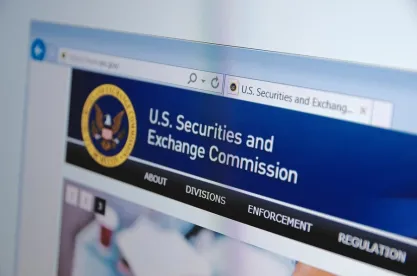On November 17, 2020, the U.S. Securities and Exchange Commission (“SEC”) announced it had adopted new rules and rule amendments to permit the use of electronic signatures for executing documents filed with the SEC through its Electronic Data Gathering, Analysis, and Retrieval (“EDGAR”) system. Prior to these changes, each signatory to an electronic filing was required to manually sign a signature page or authentication document before or at the time of the filing to authenticate the signature that appears in typed form. We believe the new rules and rule amendments will bring much-needed flexibility to signing documents filed with the SEC via EDGAR without jeopardizing the integrity of the signature process.
ELECTRONIC SIGNATURE SIGNING PROCESS
Following the rule changes, a filer may utilize the electronic signature signing process outlined in the EDGAR Filer Manual, which specifies that the signing process must:
-
Require the signatory to present a physical, logical, or digital credential1 that authenticates the signatory’s individual identity;
-
Reasonably provide for non-repudiation2 of the signature;
-
Provide that the signature be attached, affixed, or otherwise logically associated with the signature page or document being signed; and
-
Include a timestamp to record the date and time of the signature.
The SEC indicated that the above requirements are intended to be technologically neutral and allow for different types and forms of electronic signatures. While the SEC did not provide specific examples of currently permissible electronic signatures, we expect the practice to develop and a broad range of electronic signature signing processes to be acceptable.
ATTESTATION DOCUMENT
Prior to utilizing the electronic signature signing process, pursuant to Rule 302(b)(2) of Regulation S-T, each signatory must manually (and not electronically) sign a document attesting that, when using electronic signatures to make filings on EDGAR, the signatory agrees that the use of each such electronic signature constitutes the legal equivalent of such individual’s manual signature for purposes of authenticating the signature to any filing for which it is provided.
The filer must retain this attestation document for as long as the signatory may use an electronic signature in this manner and for a minimum period of seven years after the date of the most recent electronically signed document. This document may be retained and stored via electronic means. We have prepared a sample template for an attestation document for use under Regulation S-T Rule 302(b)(2), available here.
The rule changes will be effective upon publication of the adopting release in the Federal Register.
1The EDGAR Filing Manual defines “non-repudiation” to mean “assurance that an individual cannot falsely deny having performed a particular action.”
2The EDGAR Filing Manual defines “credential” for this purpose as “an object or data structure exclusively possessed and controlled by an individual to assert identity and provide for identification.”





 />i
/>i

